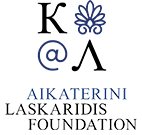Natural environment (2424 Subjects)
Panoramic view of Bunarbaşı, village, erroneously identified in the nineteenth-century with Troy. In the background the Dardanelles.
Foundations on the summit of the hill of Bunarbaşı, village, erroneously identified in the nineteenth-century with Troy.
West view of Bunarbaşı, village, erroneously identified in the nineteenth-century with Troy. In the background the island of Tenedos.
Landscape around Bunarbaşı, village, erroneously identified in the nineteenth-century with Troy. In the background the Dardanelles.
Hills around Bunarbaşı, village, erroneously identified in the nineteenth-century with Troy.
Hills around Bunarbaşı, village, erroneously identified in the nineteenth-century with Troy.
Branch, leaves and acorn of oak of the species Quercus aegylops.
Branch, leaves and acorn of oak of the species Quercus aegylops.
Oak of the species Quercus infectoria or similar, from whose galls ink and vegetal dye are made. Image depicts two types of galls which grow on the tree as well as the two subspecies of wasp of the Cynipidae species which cause the galls to grow on this tree.
Oak of the species Quercus infectoria or similar, from whose galls ink and vegetal dye are made. Image depicts two types of galls which grow on the tree as well as the two subspecies of wasp of the Cynipidae species, which cause the galls to grow on this tree.
Im. 2 A, B: Snake of the species Eryx jaculus, subspecies Eryx jaculus turcica from Polyaigos island, Cyclades. Im. 1: Skink of the species Chalcides ocellatus.
Shells of snails in natural size (a), magnified (b): from Istanbul area (1a, 1b), Crete (2,3,4,5,6,7), Chios (8,9, 11) and Kios.
Im. 1: Rodent of the genus Gerbillus gerbillus from Egypt, natural size. A: Snout B: Front leg C: Hind leg. Im. 2: Mole of the genus Talpa, most possibly of the species Talpa caeca, blind or mediterranean mole. As the animal's eyes are covered by folds of skin in contrast to the European mole (Talpa europea), Olivier claimed that this was the real mole (“aspalax” ) spoken of by Aristotle. D: Front of the head.
Im. 2: River crab from Egypt and Syria. River crab of the species Potamon potamios, from Syria, Mesopotamia and Persia.
Shells of crustaceans discovered by Olivier in various places: Lake Mareotis in Egypt (1), Egypt (2), Orontes river (3), outskirts of Beirut (4A, 4B), outskirts of Alexandria (5a, 5b), outskirts of Sanliurfa, modern-day Turkey (8A, 8B), Alexandria (9A,9B), outskirts of Beirut (10A, 10B).
Oak branch of the species Quercus Libani (Lebanon oak), from Syria.
Im. 1: (1 (Α, B, C, D, E): Shrew bones found in the Ibis burials at Saqqara catacombs, Egypt. Im. 2: Bone of rat from same burial. Im. 3 A, B: Butterfly of the Belenois Aurota species, from the coast of Syria. Im. 4 A, B: Butterfly of the Colotis fausta species from the coast of Syria. Im. 5 A, B: Leaden tablet bearing inscription in Greek, from Beirut. Im. 6, 7: Amulets in cylindrical shape made of red jasper (6) and serpentine (7) bought by Olivier in Sanliurfa.
Soft-shell turtle of the species Rafetus euphraticus, killed by Olivier during his crossing of the Euphrates. 1: Upper part of the body 2: Lower part of the body.
Im. 1: Lizard of the Agamidae species found near Isfahan. 2: Scorpion from Kahan: Claws (aa), jaws (bb),(cc), eyes (dd). Im. 3,4,5,6: Arthropods of the galeodes species. Depiction of the jaws (a).
Branch of rose tree of the species Rosa Persica, on which are shown the successive stages of the plants' blossoming. (a): Petal, with purple-coloured part designated.
Plant of the Astragalus gummifer species, from which tragacanth gum is extracted. (a) Flower of same plant. (b): Leaf of same plant.
Poplar tree of the species Populus euphratica whose foliage varies greatly among subspecies. For this reason, Olivier showed three examples of Populus euphratica leaves in his work.
Poplar tree of the species Populus euphratica whose foliage varies greatly among subspecies. For this reason, Olivier showed three examples of Populus euphratica leaves in his work.
Branch of almond tree of the species Prunus arabica, from the Arabian desert.
Landscape on Mount Uludağ, near Bursa.
The ruins of the Temple of Hera on Samos island.
The ruins of the Thermae of Gaius Xenophon (Kos) at the Asclepion of Kos island.
Fig. 1. View of Bodrum (anc. Halicarnassus). In the background the Castle of Halicarnassus, also called Castle of St. Paul. Fig. 2. View of the ruins of the Temple of Ares in Bodrum (anc. Halicarnassus).
The Meidum or Maidum Pyramid, south of Cairo. Due to its unusual shape it is also called as False Pyramid.
Nile fish.































